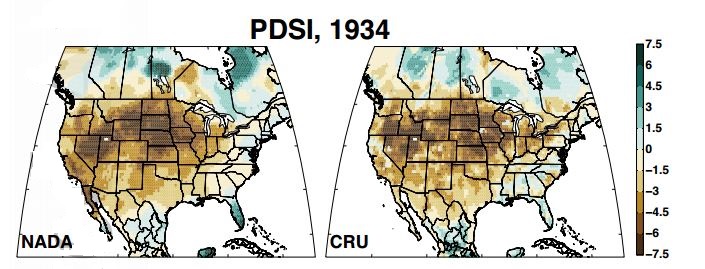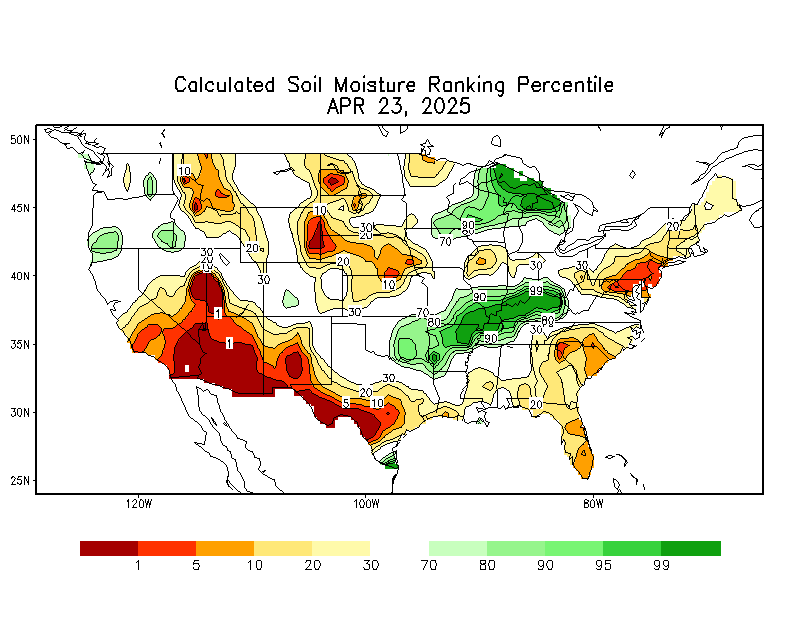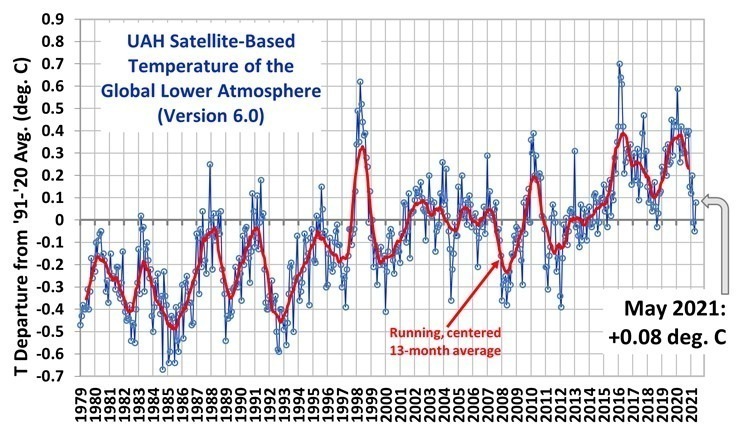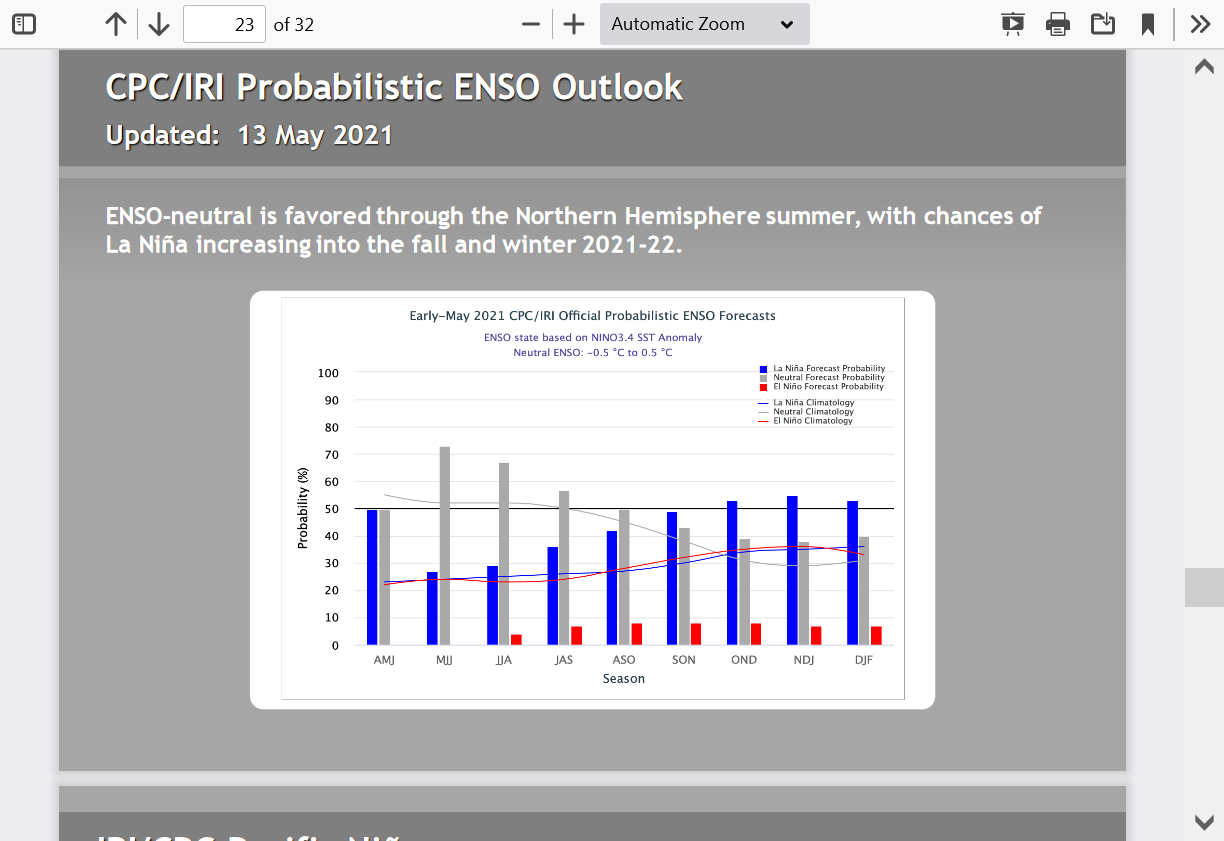
https://www.zerohedge.com/commodities/one-shocking-chart-has-farmers-trembling-fear
the link above discusses the drought in the SouthWestern part of the US, and how it will affect food production.
this link shows record low water levels at the Hoover Dam. This dam provides electricity for the area between Las Vegas and So California
It is my understanding that higher temperatures are part of the Global Warming issue. However, the lack of rain is caused by low (?) ocean temperatures on the West Coast, which has nothing to do with “Global Warming”
metmike may chime in … he knows a lot more than I do on this subject
Thanks Gunter!
I do have a few comments:
"as risks of a second Dust Bowl increase by the day"
This will not be as widespread as the Dust Bowl.
Here is an image from one of the drier periods of the Dust Bowl in 1934 below. Extremely dry across most of the country..........except for the East Coast and Southeast.

Now lets compare that to the current soil moisture.
Extremely dry out West, then in the Northern Plains to Upper Midwest to Great Lakes.
However, it's actually been wet in the C/S Plains, S.Midwest and excessively wet in the SouthCentral US this year.

Though you will hear that global warming and the climate crisis caused this.......it's the exact opposite as you alluded to with Pacific Ocean temperature being cool and the recent La Nina.
1. Global warming can't cause cooler ocean temperatures
2. The correlation with drought in the US is with La Nina's and the cooler water temperatures that define La Nina's.
3. Global warming and El Nino's(warmer E/C Tropical Pacific water) help to decrease drought risks in the US.
4. The recent La Nina/cooler water in the Pacific also coincided with some modest global cooling and the drought out West. We need more global warming from El Nino's to help break the drought.
5. The last 32 years in the US cornbelt has only featured 1 major widespread severe drought(2012). The previous one was 1988. This is the least amount of drought for that area in history BECAUSE OF climate change and more El Nino's.
6. The wild fire season will be another bad one this year and climate change will get all the blame but they will be telling you the exact opposite of the authentic science when the do that.
Here are the authentic facts and science from last year when they did that:
California governor blames wildfires on climate 'emergency'
33 responses |
Started by metmike - Sept. 14, 2020, 12:08 a.m.
https://www.marketforum.com/forum/topic/59093/
Here's more proof.
Note that we had global COOLING last year and early this year from the La Nina(cooler tropical Pacific).
You can see it clearly on the graph below. Global COOLING caused this drought out west to the northern tier states farther east........NOT global warming.
We want the benefits of global warming/El Nino's to end the drought.
Unfortunately, there are no El Nino's in sight and much of the West gets much of its precip in the Winter.
https://www.marketforum.com/forum/topic/70301/

Here's the latest ENSO update from NOAA, which covers the La Nina/El Nino situation:
We've morphed barely out of the recent La Nina recently but the models have us back into the La Nina(blue bar on the graph below) later this year and this upcoming Winter..........not good news for breaking the drought.
This also means that its unlikely that global temperatures will make new highs.
We want an EL Nino!(red bar below)
